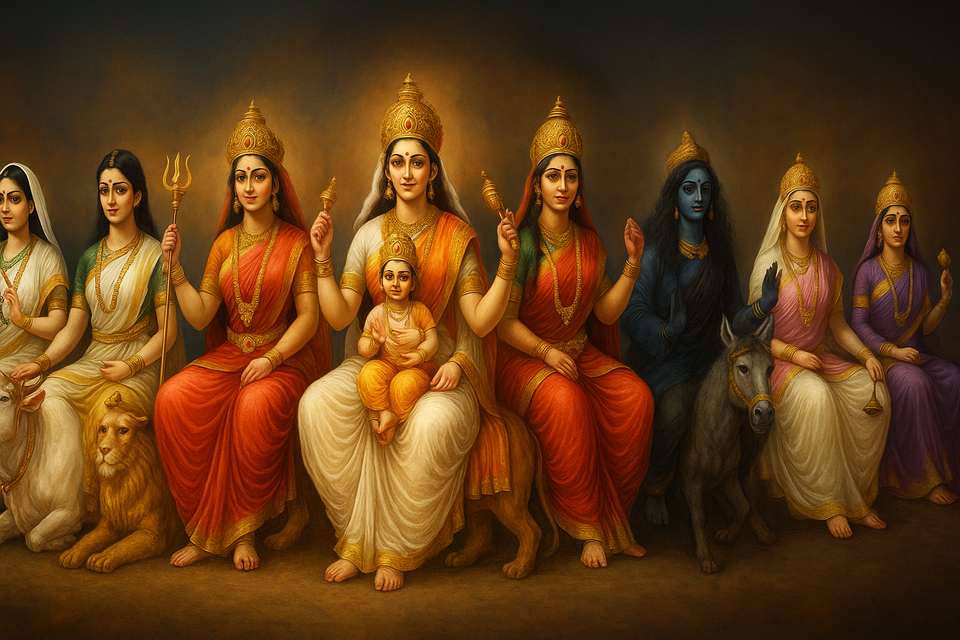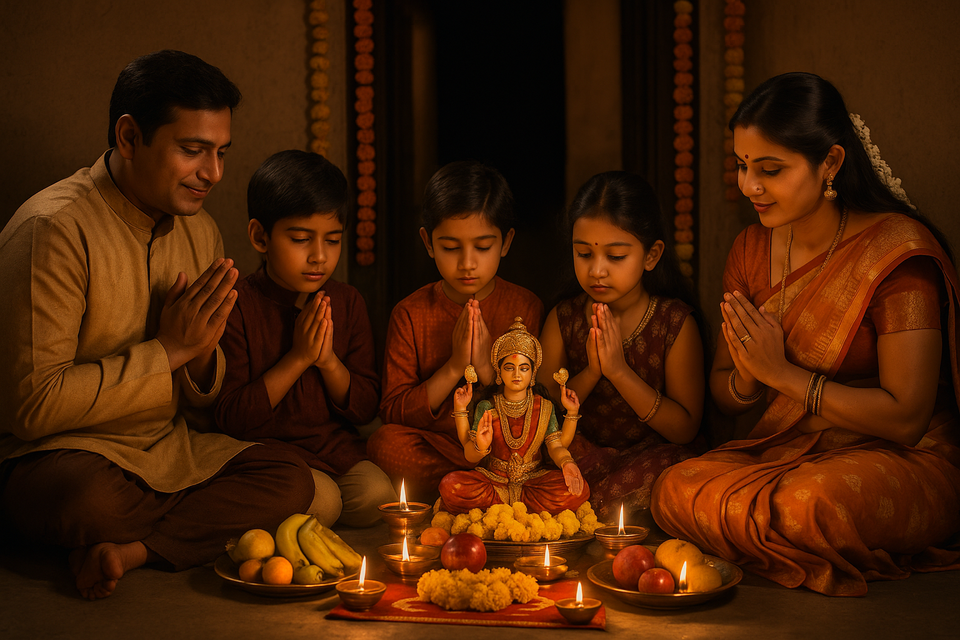Skanda Sashti: Celebrating the Triumph of Lord Kartikeya ⚔️
Celebrate Skanda Sashti 2025, honoring Lord Kartikeya’s victory! Learn its history, rituals like Soorasamharam, and how to join Tamil Nadu’s vibrant festivities. Embrace devotion and triumph! 🎉

Skanda Sashti, a vibrant Hindu festival, honors Lord Kartikeya, also known as Skanda, Murugan, or Subrahmanya, the divine warrior and son of Lord Shiva and Goddess Parvati. Celebrated on the sixth day (Sashti) of the bright fortnight in the Tamil month of Aippasi (October–November), Skanda Sashti commemorates Kartikeya’s victory over the demon Surapadman, symbolizing the triumph of good over evil. Known for its fervent fasting, grand temple rituals, and the dramatic Soorasamharam (demon-slaying reenactment), Skanda Sashti is a cherished festival, especially in Tamil Nadu, Sri Lanka, and among Tamil diaspora communities.
For a deeper understanding of India’s rich festival traditions, explore Ancient Festivals of India.
Historical Background of Skanda Sashti 📜
The origins of Skanda Sashti are deeply rooted in Hindu mythology, with references found in ancient texts like the Skanda Purana and Tamil scriptures such as the Tirumurugāṟṟupaṭai. According to legend, Lord Kartikeya was born from the divine sparks of Shiva’s third eye to lead the celestial army against the demon Surapadman, who tormented the gods and humans. After six days of intense battle, Kartikeya vanquished Surapadman on the sixth day, an event celebrated as Skanda Sashti.
Historical evidence suggests Skanda Sashti has been observed for centuries, particularly in South India, where Kartikeya is revered as Murugan, the patron deity of the Tamil people. The festival gained prominence during the Chola and Pandya dynasties (9th–13th centuries CE), with grand celebrations documented at temples like Palani and Tiruchendur. Tamil saint Arunagirinathar’s 15th-century devotional hymns, Tiruppugazh, further popularized Skanda Sashti by extolling Murugan’s valor.
Today, Skanda Sashti is a major festival in Tamil Nadu, Kerala, Karnataka, and Sri Lanka, with global Tamil communities celebrating it fervently. Its historical significance lies in its role as a spiritual and cultural anchor, uniting devotees in devotion to Lord Kartikeya. 🕉️
Mythological and Spiritual Significance of Skanda Sashti ✨
Skanda Sashti holds profound spiritual and mythological importance, embodying themes of courage, victory, and divine protection. Here are key aspects of its significance:
- Triumph of Good Over Evil: Skanda Sashti celebrates Kartikeya’s victory over Surapadman, symbolizing the defeat of ignorance, ego, and negativity by divine wisdom and righteousness.
- Divine Warrior’s Grace: As the commander of the celestial army, Kartikeya’s blessings are sought during Skanda Sashti for strength, courage, and success in overcoming life’s challenges.
- Spiritual Purification: Fasting and prayers during Skanda Sashti purify the mind and body, fostering spiritual growth and devotion to Lord Murugan.
- Protection and Prosperity: Devotees believe that worshipping Kartikeya on Skanda Sashti grants protection from evil forces and brings prosperity, especially for those facing obstacles.
- Devotion to Murugan: Skanda Sashti deepens the bond with Kartikeya, revered as a youthful, compassionate deity who guides devotees toward enlightenment.
The spiritual essence of Skanda Sashti lies in its call to embrace courage and purity, as reflected in the Tamil adage: “Murugan’s spear pierces all fears.” 🌼
Cultural Importance of Skanda Sashti 🎭
Skanda Sashti is a cultural cornerstone that showcases South India’s rich heritage of devotion, art, and community spirit. Its cultural significance includes:
- Artistic Expression: Skanda Sashti features Soorasamharam reenactments, classical music (bhajans), and Bharatanatyam performances at temples, celebrating Tamil culture’s artistic vibrancy.
- Culinary Traditions: Devotees prepare vegetarian offerings like payasam, vadai, and pongal during Skanda Sashti, shared as prasadam to foster communal bonding.
- Literary Legacy: Tamil devotional literature, such as Kanda Shasti Kavasam and Tiruppugazh, is recited during Skanda Sashti, preserving linguistic and spiritual heritage.
- Community Unity: The festival brings together diverse communities, from rural villagers to urban Tamils, in temple gatherings and processions during Skanda Sashti.
- Economic Impact: Skanda Sashti boosts local economies, with increased sales of puja items, flowers, and festive foods at temple towns like Palani and Tiruchendur.
The cultural vibrancy of Skanda Sashti lies in its blend of spirituality and festivity, making it a cherished celebration for Tamils worldwide. 🌈
For insights into India’s sacred sites, visit Shiva Temples In India.
Rituals and Traditions of Skanda Sashti 🛕
Skanda Sashti is marked by a series of rituals that blend devotion, discipline, and celebration, typically spanning six days leading to the main Sashti day. Here’s a detailed look at the key rituals of Skanda Sashti:
1. Six-Day Fasting 🍉
Devotees observe a six-day fast during Skanda Sashti, consuming only fruits, milk, or light meals to purify the body and focus on spiritual devotion. Some undertake nirjala (waterless) fasting on the main day.
2. Daily Puja and Offerings 🙏
Daily pujas are performed at homes and temples, offering:
- Flowers: Red arali or lotus.
- Fruits: Bananas or coconuts.
- Sweets: Payasam or laddu.
Mantras like Skanda Sashti Kavacham and Subrahmanya Ashtakam are chanted to invoke Kartikeya’s blessings during Skanda Sashti.
3. Soorasamharam Reenactment ⚔️
The highlight of Skanda Sashti, Soorasamharam is a dramatic reenactment of Kartikeya’s victory over Surapadman, held at temples like Tiruchendur. Devotees witness priests or actors portraying Murugan slaying the demon, symbolizing the triumph of good.
4. Kanda Shasti Kavasam Recitation 📖
Devotees recite the Kanda Shasti Kavasam, a powerful Tamil hymn by Devaraya Swamigal, during Skanda Sashti to seek protection and strength. Group recitations at temples create a devotional ambiance.
5. Temple Processions 🚩
Temples organize grand processions during Skanda Sashti, carrying Kartikeya’s idol on a palanquin adorned with flowers. Devotees sing Tiruppugazh and chant “Arohara!” to honor Murugan.
6. Abhishekam (Ritual Bathing) 🛁
Priests perform abhishekam, bathing Kartikeya’s idol with milk, honey, and sandalwood paste during Skanda Sashti, accompanied by Vedic chants, to sanctify the deity and devotees.
7. Thirukalyanam (Divine Wedding) 💍
On the day after Sashti, some temples like Tirupparankundram celebrate Thirukalyanam, reenacting Kartikeya’s marriage to Deivayanai, symbolizing divine union and harmony during Skanda Sashti.
8. Charity and Prasadam Sharing 🤝
Devotees offer food and clothes to the needy during Skanda Sashti, sharing prasadam like pongal or vadai with fellow worshippers, embodying Murugan’s compassion.
9. Eco-Friendly Practices 🌱
Recent Skanda Sashti celebrations promote eco-friendly offerings, such as avoiding plastic decorations and using natural materials, to protect temple surroundings.
These rituals make Skanda Sashti a vibrant celebration of devotion, valor, and cultural heritage. 🎊
Celebrations Across India and Beyond 🌍
Skanda Sashti is celebrated with great fervor in Tamil Nadu, Kerala, Karnataka, and Sri Lanka, with unique regional traditions, and resonates globally among Tamil communities. Here’s how it’s observed:
- Tamil Nadu: Tiruchendur, Palani, and Tirupparankundram are epicenters of Skanda Sashti, with massive crowds for Soorasamharam and Thirukalyanam. The Tiruchendur Murugan Temple sees over 500,000 devotees.
- Kerala: Temples like Haripad Subrahmanya Swamy host Skanda Sashti with abhishekam and processions, blending Malayalam and Tamil traditions.
- Karnataka: Bengaluru’s Subrahmanya temples celebrate Skanda Sashti with Kanda Shasti Kavasam recitations and cultural programs.
- Sri Lanka: Jaffna’s Nallur Kandaswamy Temple is a major Skanda Sashti hub, with six-day festivities and Soorasamharam drawing Tamil devotees.
- Global Celebrations: Tamil diaspora in Malaysia (Batu Caves), Singapore, Canada, and Australia celebrate Skanda Sashti with temple pujas, fasting, and virtual Soorasamharam broadcasts.
The festival’s universal appeal fosters devotion and cultural pride, uniting Tamils worldwide during Skanda Sashti. 🌏
Modern Relevance of Skanda Sashti 🌐
As of June 5, 2025, Skanda Sashti remains a powerful symbol of spiritual strength, cultural identity, and community unity, adapting to modern contexts. Its contemporary significance includes:
- Spiritual Resilience: Skanda Sashti inspires devotees to face challenges with courage, drawing from Kartikeya’s warrior spirit, resonating with modern stress management needs.
- Cultural Preservation: The festival keeps Tamil traditions like Tiruppugazh and Soorasamharam alive, with digital platforms sharing hymns and temple streams during Skanda Sashti.
- Community Engagement: Skanda Sashti fosters social initiatives like food drives and temple cleanups, aligning with modern community welfare goals.
- Economic Boost: The festival drives tourism to temple towns, boosting sales of puja items and festive foods during Skanda Sashti.
- Digital Reach: Live-streamed Soorasamharam, mobile apps, and social media amplify Skanda Sashti’s global reach, with X posts sharing festival updates and Kavasam recitals.
The festival’s blend of tradition and modernity ensures its relevance, with plans for grand 2025 Skanda Sashti celebrations in Tiruchendur and Palani.
How to Celebrate Skanda Sashti at Home 🏠
Planning to celebrate Skanda Sashti? Here’s a step-by-step guide for a meaningful celebration:
- Observe a Fast: Undertake a six-day fast, consuming fruits or light meals, to purify your body and mind during Skanda Sashti.
- Set Up a Puja Space: Clean your home and create an altar with a Kartikeya idol or picture, decorated with flowers and lamps for Skanda Sashti.
- Perform Daily Puja: Offer payasam, bananas, and red flowers, chanting Skanda Sashti Kavacham or Subrahmanya Ashtakam daily during Skanda Sashti.
- Recite Kanda Shasti Kavasam: Read or play the Kavasam hymn each morning, seeking Murugan’s protection during Skanda Sashti.
- Watch Soorasamharam: Stream Soorasamharam from temples like Tiruchendur on the main Sashti day, joining virtually in Skanda Sashti celebrations.
- Prepare Prasadam: Cook pongal or vadai as offerings and share with family as prasadam during Skanda Sashti.
- Engage in Charity: Donate food or essentials to the needy, reflecting Murugan’s compassion during Skanda Sashti.
- Join Virtual Events: Participate in online pujas or temple broadcasts, connecting with global devotees during Skanda Sashti.
- Share Greetings: Send Skanda Sashti wishes via WhatsApp or Instagram, with messages like “Happy Skanda Sashti! May Murugan grant you strength and victory!”
These steps ensure a heartfelt and authentic Skanda Sashti celebration at home. 🎈
Practical Information for Visitors 🌍
Planning to experience Skanda Sashti in India in 2025? Here’s what you need to know as of June 5, 2025:
- Best Places to Visit: Tiruchendur (Murugan Temple), Palani (Dhandayuthapani Temple), or Tirupparankundram for vibrant Skanda Sashti celebrations.
- Timing: Skanda Sashti falls in October–November 2025, typically around November 7–12, based on the Tamil calendar. Check temple schedules for exact dates.
- How to Reach:
- By Air: Madurai Airport (for Palani, 100 km) or Tuticorin Airport (for Tiruchendur, 40 km) connect to major cities.
- By Train: Tiruchendur, Palani, and Madurai Junction are accessible railway stations.
- By Road: Tamil Nadu’s highways connect these towns with buses and taxis.
- Accommodation: Book hotels or guesthouses in advance, especially in Tiruchendur and Palani. Options range from budget stays to hotels like Hotel Tamilnadu (Tiruchendur).
- Etiquette: Dress modestly, remove footwear at temples, and respect fasting devotees during Skanda Sashti rituals.
- Safety Tips: Avoid crowded areas during Soorasamharam and follow temple guidelines for a safe Skanda Sashti experience.
Visiting during Skanda Sashti offers a unique glimpse into Tamil Nadu’s spiritual and cultural vibrancy. 🛫
Conclusion 🌄
Skanda Sashti is a radiant celebration of Lord Kartikeya’s divine valor, uniting devotees in devotion, courage, and cultural pride. From six-day fasts and Soorasamharam to Kanda Shasti Kavasam recitations and temple processions, Skanda Sashti offers a rich tapestry of rituals that inspire spiritual growth and community bonding. Its historical, spiritual, and modern significance makes it a cherished festival across Tamil Nadu and beyond. Whether you’re a devotee seeking Murugan’s blessings or a visitor exploring Tamil traditions, Skanda Sashti promises an unforgettable experience. Embrace the spirit of Skanda Sashti and celebrate the triumph of good with joy! 🪔





